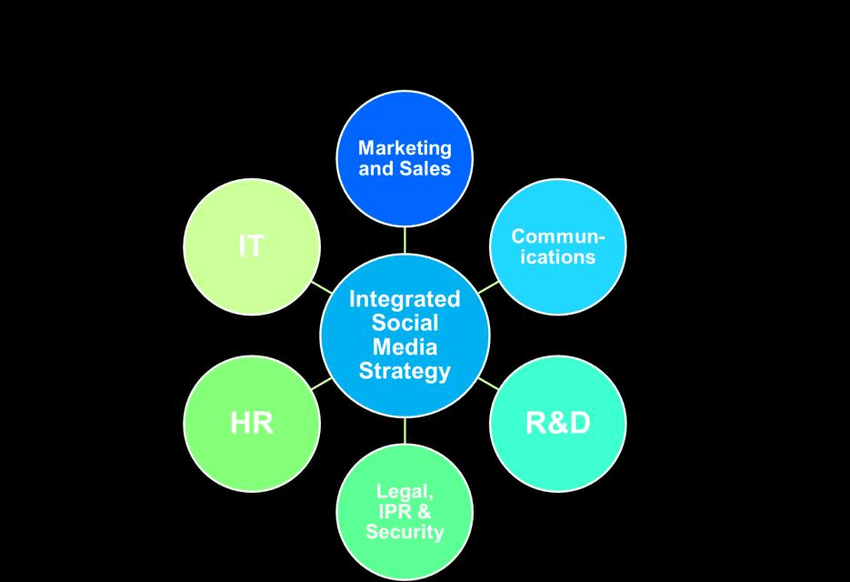When you combine identity, ease of publishing, and the penchant to publish and to use shared information in purchase-related decision-making processes, the larger role of the Social Feedback Cycle and the practice of social business emerges: Larger than the loop that connects sales with marketing
—one of the areas considered as part of traditional Customer Relationship Management (CRM)
—the Social Feedback Cycle wraps the entire business. Consider an organization like Freescale, a spin-off of Motorola. Freescale uses YouTube for various sanctioned purposes, including as a place for current employees to publish videos about their jobs as engineers: The purpose is to encourage prospective employees
—given a chance to see “inside Freescale”
—to more strongly consider working for Freescale. Or, look at an organization like Coca-Cola: Coke is reducing its dependence on branded microsites in favor of consumer-driven social sites like Facebook for building connections with customers. Coke is also directly tapping customer tastes through its Coca-Cola Freestyle vending machines that let consumers mix their Coke flavors. Comcast and many other firms now use Twitter as a customer support channel. The list of examples of the direct integration of collaborative and shared publishing applications in business
Read More: thenewspointof.net
—beyond marketing is multiplying. I explore all these applications of social technology in business in greater detail in subsequent chapters. For now, the simple question is, “What do all of these applications have in common?” The answer is, “Each of them has a larger footprint than 10c h a p t e r 1: Social Media and Customer E ngagementâ marketing.” Each directly involves multiple disciplines within the organization to create an experience shared and talked about favorably. These are examples not of social media marketing but social business practices. Importantly, these are also examples of a reversed message flow: The participation and marketplace information are coming from the consumers and heading toward the business. Traditionally, over mass media, it’s been the other way around. In each of the previous examples of social business thinking and applications, the business is listening to the customer. What is being learned from this listening and participation is then tapped internally to change, sustain, or improve specific customer experiences. When subsequently tied to business objectives, the practice of social business becomes holistic indeed. The Connected Customer The upshot is that the customer is now in a primary role as an innovator, as a source of forward-pointing information around taste and preference. As such is potentially the basis for competitive advantage. I say “potentially” because customers having opinions or ideas and actually getting useful information from them and then using it are two different things. Here again, social business and the related technologies step in: Social media marketing very often stops at the listening stage, perhaps also responding to directly raised issues in the process; social business takes two added steps. First, social business practices provide formal, visible, and transparent connections that link customers and the business and internally link employees to each other and back to customers. This is a central aspect of social business: The “social” in “social business” refers to the development of connections between people, connections used to facilitate business, product design, service enhancement, market understanding, and more. Second, because employees are connected and able to collaborate, social business and Web 2.0 technology apply internally just as it does externally—the firm can respond to what its customers are saying through social media channels efficiently and credible. Before jumping too far, a point about fear: fear of the unknown, the unsaid, the unidentified, and even the uninformed saying bad things about your brand, product, or service that aren’t even correct! Fear not, or at least fearless. By engaging, understanding, and participating, you can take big steps to bring some comfort to your team around you that may be more than a bit nervous about social media. Jake McKee, a colleague of mine and the technical editor for this book, attended one of Andy Sernovitz’s way cool social media events. The group toured an aircraft carrier while it operated in the Pacific. Jake noted that even though the deck of an active aircraft carrier
—considered among the most dangerous workplaces on earth was chaotic and therefore scary to the untrained eye, it was surprisingly 11 The Social Web and Engagement fear-free. Everyone knew their place and everyone watched out for each other (especially for Andy’s tour group). F-18s were launching 100 feet away: Average age of the crew? 19. Fear? Nope. The point is this: You can overcome fear with structure and discipline on the deck of an active aircraft carrier or in business on the Social Web. Chapter 5, “Social Technology and Business Decisions,” Chapter 6, “Social Analytics, Metrics and Measurement,” and Chapter 7, “Five Essential Tips When Starting Out,” provide insights into the organizational adoption of social technology along with the best practices and essential quick-start tips to put you at ease
 NEWSHUNTS
NEWSHUNTS




